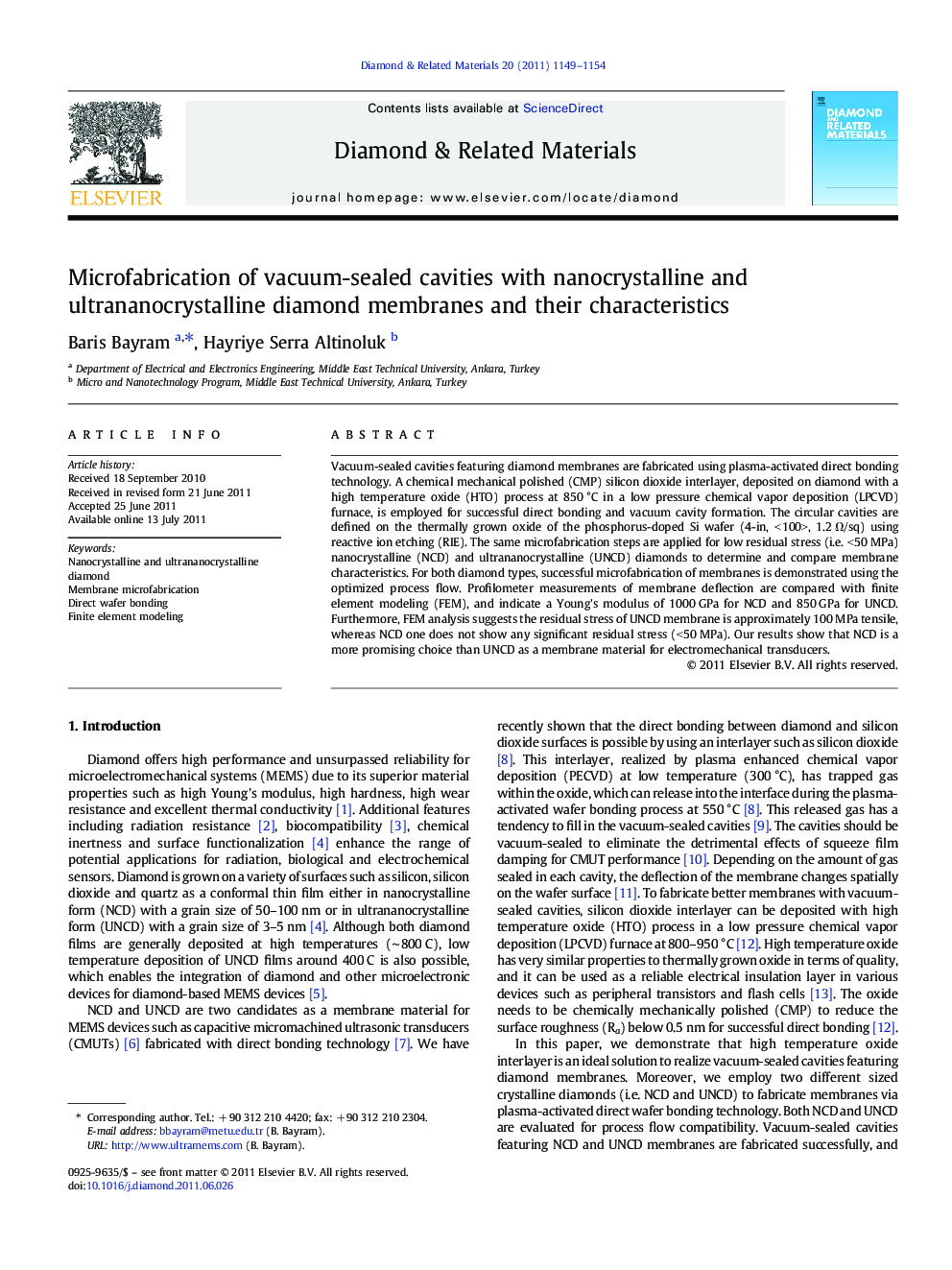| Article ID | Journal | Published Year | Pages | File Type |
|---|---|---|---|---|
| 701871 | Diamond and Related Materials | 2011 | 6 Pages |
Vacuum-sealed cavities featuring diamond membranes are fabricated using plasma-activated direct bonding technology. A chemical mechanical polished (CMP) silicon dioxide interlayer, deposited on diamond with a high temperature oxide (HTO) process at 850 °C in a low pressure chemical vapor deposition (LPCVD) furnace, is employed for successful direct bonding and vacuum cavity formation. The circular cavities are defined on the thermally grown oxide of the phosphorus-doped Si wafer (4-in, < 100>, 1.2 Ω/sq) using reactive ion etching (RIE). The same microfabrication steps are applied for low residual stress (i.e. < 50 MPa) nanocrystalline (NCD) and ultrananocrystalline (UNCD) diamonds to determine and compare membrane characteristics. For both diamond types, successful microfabrication of membranes is demonstrated using the optimized process flow. Profilometer measurements of membrane deflection are compared with finite element modeling (FEM), and indicate a Young's modulus of 1000 GPa for NCD and 850 GPa for UNCD. Furthermore, FEM analysis suggests the residual stress of UNCD membrane is approximately 100 MPa tensile, whereas NCD one does not show any significant residual stress (< 50 MPa). Our results show that NCD is a more promising choice than UNCD as a membrane material for electromechanical transducers.
Graphical abstractVacuum-sealed cavities featuring diamond (NCD, UNCD) membranes with plasma-activated direct wafer bonding using high temperature oxide interlayer.Figure optionsDownload full-size imageDownload as PowerPoint slideHighlights► Vacuum-sealed cavities featuring diamond membranes are fabricated. ► Both nanocrystalline (NCD) and ultrananocrystalline diamond (UNCD) are used. ► Plasma-activated direct wafer bonding technology is employed. ► Chemically mechanically polished high temperature oxide is used as an interlayer. ► Higher Young's modulus and thermal stability make NCD a better choice for membranes.
